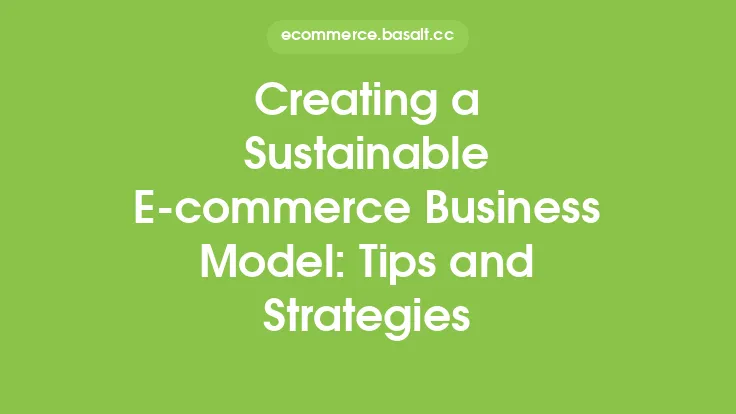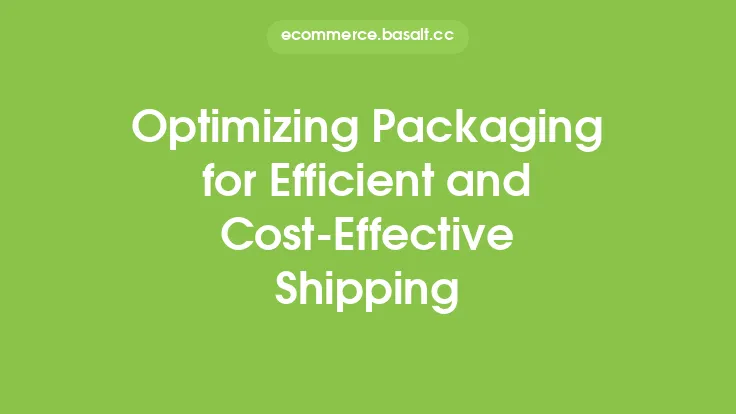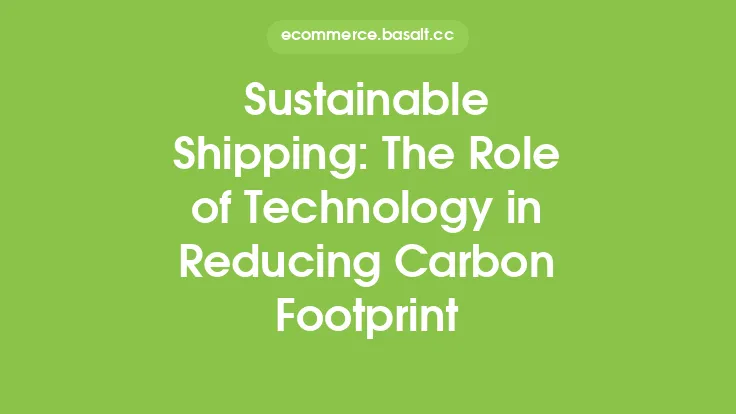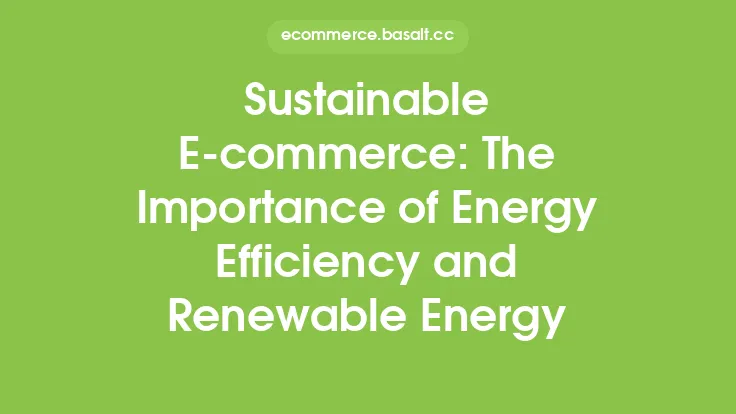The e-commerce industry has experienced rapid growth over the past decade, with more and more consumers turning to online shopping for its convenience and flexibility. However, this growth has also led to an increase in packaging waste, with millions of tons of cardboard, plastic, and other materials being used to ship products every year. As consumers become more environmentally conscious, e-commerce companies are under pressure to reduce their carbon footprint and adopt sustainable packaging practices.
Introduction to Sustainable Packaging
Sustainable packaging refers to the use of materials and designs that minimize environmental impact while still protecting products during shipping. This can include using biodegradable or recyclable materials, reducing packaging size and weight, and designing packages that can be easily reused or recycled. Sustainable packaging is not only good for the environment, but it can also help e-commerce companies reduce costs and improve their brand reputation.
Benefits of Sustainable Packaging
There are several benefits to adopting sustainable packaging practices in e-commerce. One of the most significant benefits is the reduction of waste. Traditional packaging materials such as plastic and Styrofoam are not biodegradable and can take hundreds of years to decompose. By switching to sustainable materials, e-commerce companies can significantly reduce the amount of waste they generate. Sustainable packaging can also help reduce carbon emissions, as it often requires less energy to produce and transport. Additionally, sustainable packaging can help e-commerce companies improve their brand reputation and attract environmentally conscious consumers.
Strategies for Sustainable Packaging
There are several strategies that e-commerce companies can use to adopt sustainable packaging practices. One strategy is to use biodegradable or recyclable materials, such as cardboard, paper, or bioplastics. Another strategy is to reduce packaging size and weight, which can help reduce waste and lower shipping costs. E-commerce companies can also design packages that can be easily reused or recycled, such as using reusable bags or containers. Additionally, companies can use minimal packaging or "naked" packaging, which eliminates unnecessary packaging materials.
Materials for Sustainable Packaging
There are several materials that can be used for sustainable packaging, including bioplastics, recycled paper, and mushroom-based packaging. Bioplastics are made from renewable resources such as corn starch or sugarcane and are biodegradable. Recycled paper is a sustainable alternative to traditional paper products and can be used to make packaging materials such as boxes and inserts. Mushroom-based packaging is a new and innovative material that is made from mycelium, the root structure of mushrooms, and is biodegradable and compostable.
Best Practices for Implementing Sustainable Packaging
Implementing sustainable packaging practices requires a thorough analysis of a company's packaging needs and a commitment to reducing waste. One best practice is to conduct a packaging audit, which involves analyzing the types and amounts of packaging materials used and identifying areas for reduction and improvement. Another best practice is to set sustainability goals and targets, such as reducing packaging waste by a certain percentage or switching to biodegradable materials. E-commerce companies can also work with suppliers to source sustainable materials and design packages that are optimized for shipping and storage.
Challenges and Limitations of Sustainable Packaging
While sustainable packaging offers many benefits, there are also several challenges and limitations to its adoption. One challenge is the higher cost of sustainable materials, which can be a barrier for small and medium-sized e-commerce companies. Another challenge is the lack of standardization in sustainable packaging, which can make it difficult for companies to compare and choose sustainable materials. Additionally, sustainable packaging may not always be available or accessible, particularly in certain regions or countries.
Future of Sustainable Packaging in E-commerce
The future of sustainable packaging in e-commerce is promising, with many companies already adopting sustainable practices and investing in new and innovative materials. As consumers become more environmentally conscious, the demand for sustainable packaging is likely to increase, driving innovation and investment in the industry. Additionally, governments and regulatory bodies are beginning to take notice of the environmental impact of packaging waste, and are implementing policies and regulations to encourage sustainable packaging practices. As the e-commerce industry continues to grow and evolve, sustainable packaging is likely to play an increasingly important role in reducing waste and minimizing environmental impact.
Conclusion
Reducing carbon footprint in e-commerce through sustainable packaging is a critical step towards minimizing environmental impact and promoting sustainability. By adopting sustainable packaging practices, e-commerce companies can reduce waste, lower carbon emissions, and improve their brand reputation. While there are challenges and limitations to sustainable packaging, the benefits are clear, and the future of sustainable packaging in e-commerce is promising. As the industry continues to evolve, it is likely that sustainable packaging will become the norm, and companies that adopt sustainable practices will be well-positioned for success in a rapidly changing market.





